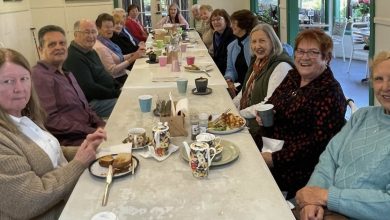200 Years of the Bells Line of Road
Just on two hundred years ago, at the age of 19, a young man, Archibald Bell Junior, who was raised in the Richmond area, set out to try to find an alternative crossing of the Blue Mountains other than that discovered by Wentworth, Blaxland and Lawson.
He was an excellent bushman who had noticed that an Aboriginal woman captured near his family property of “Belmont” at Richmond had escaped. Using two trusty Aboriginal men and a couple of packhorses he set out in August 1823 to attempt to follow her track west across the mountains. He succeeded in following her track to Mount Tomah which took him two days. He was unable to locate a safe descent to the west so turned back.
Not to be deterred he tried again in September 1823 and found a way down into the Hartley Valley, following the ridge line from Mount Tomah until it turned south at what is now named Darling Causeway. Halfway down the Darling Causeway the route turned west down a gully into Hartley Vale. Following his success, the “Sydney Gazette” reported that the route would be the “readiest” route from the Hawkesbury and Hunter River and as near to Parramatta as the Old Bathurst Road via Emu Plains over the Blue Mountains. The route that Bell had taken was surveyed by Robert Hoddle and a road constructed which had numerous resting places for stock. The township of Bell was named after the explorer as was also Mount Bell and the road itself.
Sir Thomas Mitchell wrote in 1855 that he felt that “Two roads across the mountains were not required for a young colony”. He also reported considerable sums had been spent on the Emu-Blaxland route (the Great Western Highway) and that settlements had followed this line.
Bells Line of Road gradually fell into disrepair and it was not until around 1930 that maintenance was recommenced but the road was underutilised because it was narrow and winding and unable to carry the modern traffic of the time. However, by 1942, with the entry of Japan into World War 2, the Military thought that the unconstructed portions of the road should be improved to provide an alternative route to the Great Western Highway. Shortly after work commenced it ceased once more as it was felt that the east coast of Australia was no longer in danger of invasion.
Not until 1945 was another attempt made to improve the road. The road once ran through the village of Kurrajong but a deviation was created around the village by building a bridge over Little Wheeny Creek in 1947. The old road through the village is now known as “Old Bells Line of Road”.
But what became of the explorer Archibald Bell Junior after discovering the new route over the Blue Mountains.
Archibald decided to join his elder brother, William, and followed him to the Hunter River. On his journey north he followed the route of John Howe and Benjamin Singleton, whom he found dying of starvation at Patrick’s Plains. As a result of the rescue, he received a grant of 1000 acres near the town of Singleton where he built his two-storey home, “Corinda”. He was one of the first to introduce cattle to the area and to use horse teams.
An extract from “CENTENARY OF SINGLETON”, publ. 20 March 1920
“…Corinda owes its start to Archibald Bell, jun., a son of Lieut. Bell, who came to Sydney in command of the 102nd Regiment in 1803, and who became the owner of the historic estate of Belmont, in the Richmond district. Here his son grew to young manhood, was widely known as an expert bushman, and is credited with having rescued Benjamin Singleton’s party when they were in distress at the close of their exploring venture. Archie Bell received a thousand acres in the Hunter River district, choosing the part known as Corinda. He is credited with driving the first cattle into this district. The house, a long two-storied building facing the river, was built of stones quarried at Glendon, and brought across the river in punts. When Corinda homestead had fallen to decay (for Mr Bell returned to Belmont, and this estate passed from his family), the stones were removed to Belford to build the Church of England there, so that it forms an interesting link with the past….”
He purchased a property called “Pickering” located on the Hunter River in 1859 and in 1879 became a member of the NSW Legislative Assembly. He died on 9th of August in 1883 aged 79 at his property of “Pickering” at Denman.











